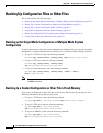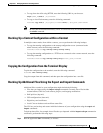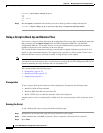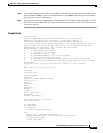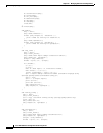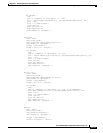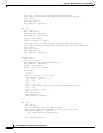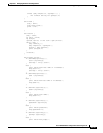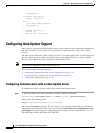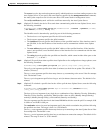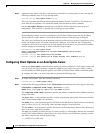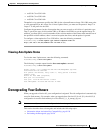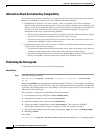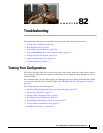
81-16
Cisco ASA 5500 Series Configuration Guide using the CLI
Chapter 81 Managing Software and Configurations
Configuring Auto Update Support
chop($prompt=<>);
}
if (defined ($options{e})) {
$enable = $options{e};
}
else {
print “Enter enable password:”;
chop($enable=<>);
}
if (defined ($options{r})) {
$restore = 1;
$restore_file = $options{r};
}
}
Configuring Auto Update Support
Auto Update is a protocol specification that allows an Auto Update Server to download configurations
and software images to many ASAs and can provide basic monitoring of the ASAs from a central
location.
The ASA can be configured as either a client or a server. As an Auto Update client, it periodically polls
the Auto Update Server for updates to software images and configuration files. As an Auto Update
Server, it issues updates for ASAs configured as Auto Update clients.
Note Auto Update is supported in single context mode only.
This section includes the following topics:
• Configuring Communication with an Auto Update Server, page 81-16
• Configuring Client Updates as an Auto Update Server, page 81-18
• Viewing Auto Update Status, page 81-19
Configuring Communication with an Auto Update Server
To configure the ASA as an Auto Update client, perform the following steps:
Step 1 To specify the URL of the Auto Update Server, enter the following command:
hostname(config)# auto-update server url [source interface] [verify-certificate]
where url has the following syntax:
http[s]://[user:password@]server_ip[:port]/pathname
SSL is used when https is specified. The user and password arguments of the URL are used for basic
authentication when logging in to the server. If you use the write terminal, show configuration or show
tech-support commands to view the configuration, the user and password are replaced with ‘********’.
The default port is 80 for HTTP and 443 for HTTPS.



